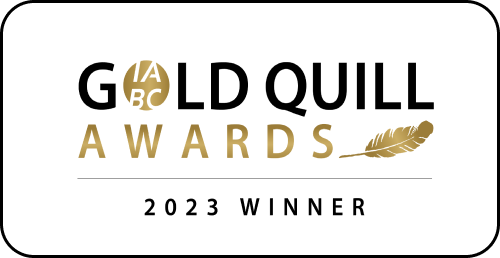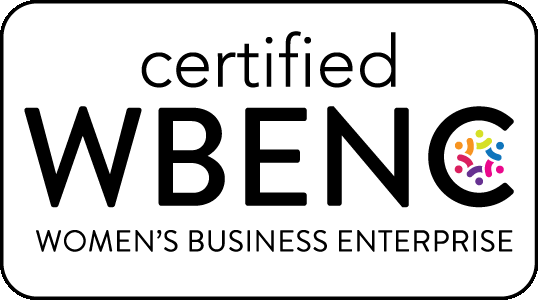The ongoing pandemic, economic and social turmoil, and the shift to hybrid work environments are all pushing us to seek meaningful connections in the workplace. Recently, we sat down with Michelle Richitelli, Senior Vice President of Internal Communications at TIAA, to learn about how one Fortune 500 company is managing the upheaval of the current moment, and how it has evolved its associate engagement and communications strategy in response.
Q: During the past two years, company leaders had to really shift how they were interacting with their people and change their approaches to keeping them engaged. What changes did you make during the pandemic that you think you’ll keep?
A: As we’ve seen, there’s no playbook for how to create connections during unprecedented times. Above all, we need to stay agile and flexible and respond to what our people need in the moment.
We’ve learned that we need to invest in communications, and really over-communicate when people feel uncomfortable – especially when we don’t have all the answers. The volume and frequency of our communications have increased, and we plan to maintain this pace.
So there are three main things we’re doing more of these days to support these shifts:
Equipping leaders to engage with their teams
As we’ve always done, we took a very high-touch approach to associate engagement at TIAA. First, because senior leaders needed to connect with associates more deeply than ever, we equipped them with training and resources on how to engage their people. We created dedicated sessions for managers, resource guides on how to connect with associates remotely, and how to manage performance remotely. I’m particularly proud of the discussion guides we provided that detailed how to create space to talk to associates about world events in a way that’s not divisive. These tools continue to help us navigate through tough times and strengthen diversity and inclusion.
Getting people talking
We’ve initiated a number of different information sessions that have been very successful in addressing people’s concerns about their physical, mental, and emotional well-being, as well as the state of the company.
We realized we needed to create an environment where people can be okay with not being okay. For example, we hosted a panel of our most senior leaders to address mental health in the workplace. During the sessions, the leaders opened up about their personal or family challenges and reminded us that mental health affects everyone in some way. Thousands of people joined the session, which helped people engage with our leaders on a much more personal level than they had previously.
Asking for feedback
We have always sought out feedback from our employees, through surveys, Q&A sessions, and panel discussions. During the pandemic, we increased our efforts in this area, and we continue these efforts – implementing lots of surveys on our new ways of working and other changes happening throughout the company.
Q: How is the hybrid work arrangement going? How are you enticing people back into the office?
A: Hybrid work is a work in progress. We’re all trying to figure it out. During our two-year, forced social experiment, people got very comfortable being fully remote. Many have become disillusioned with commuter culture and don’t want to come into the office without a good reason to be there. So we had to be very intentional about striking that balance between creating opportunities for in-person collaboration and providing the flexibility that people want and need. We believe that both aspects are critical to our culture and business success.
Staying flexible
When we implemented our new hybrid work arrangements, we did it very gradually. We started with voluntary waves, then moved to general guidelines, rather than strict rules about when to be in the office. We gave people grace, and a long window of time, if they were not ready or able to be back in the office yet. We asked associates to try to be in the office for 2-4 days, but leaders could make specific decisions for their teams. Some leaders are using “anchor days,” asking everyone to try to be in the office on the same day or days per week. Overall, our approach is still evolving.
Upgrading facilities
We’ve invested in our office spaces to modernize them. They are now open and bright – and we’ve created different types of spaces, so people can work in groups or individually. We’ve also stepped up our food and coffee options, opened onsite gyms in some locations, and we offer social Thursdays with wine and beer. We’ve also introduced workplace services teams in many of our locations, who provide concierge services. They greet associates when they arrive, help people book rooms, order lunch, and manage the facilities among many other responsibilities.
Gathering associate testimonials
We’re doing a lot of internal marketing of our new policies and services to entice people back. For example, we’ve asked associates to provide video testimonials about how they’re making hybrid work for them personally. It’s helping to draw people back in, but we still have work to do. We understand that it will take time for people to adjust to the new way of working.
Q: What new ways of communicating have you initiated to maintain engagement with associates?
A: We realized that we need to be conscious of both the in-person and online experience of our associates on any given day. So we’ve instituted a number of new channels, including onsite digital screens in common areas, a newsletter devoted to new ways of working, and several different virtual information sessions.
These sessions include a regular meeting led by the HR team to help answer associate questions about current topics, as well as sessions for people managers, to learn about things like benefits and facilities.
In the past year, we’ve also introduced several new senior leaders and updated our business strategy. So in addition to regular town hall meetings, we have a bimonthly Q&A session called “Ask the EC” which is led by our C-suite leaders and focuses on topics directly related to the business.
All of these information sessions have been very popular with associates, and we plan to continue to evolve them going forward.
Q: What advice do you have for communications and HR professionals, who are at the center of all the shifts at work?
A: First, remain flexible and open to change – because change is a constant. Also, because so much of change management falls to HR and Communications professionals and the volume of work for these teams has increased, we have to be very cognizant of our own mental health. Take the time you need to recharge and take care of yourself so that when you come back to work, you can take care of your people.
Thank you, Michelle, for taking the time to speak with us. It sounds like TIAA is doing a lot of great work to keep employees engaged, and we appreciate the insights.


